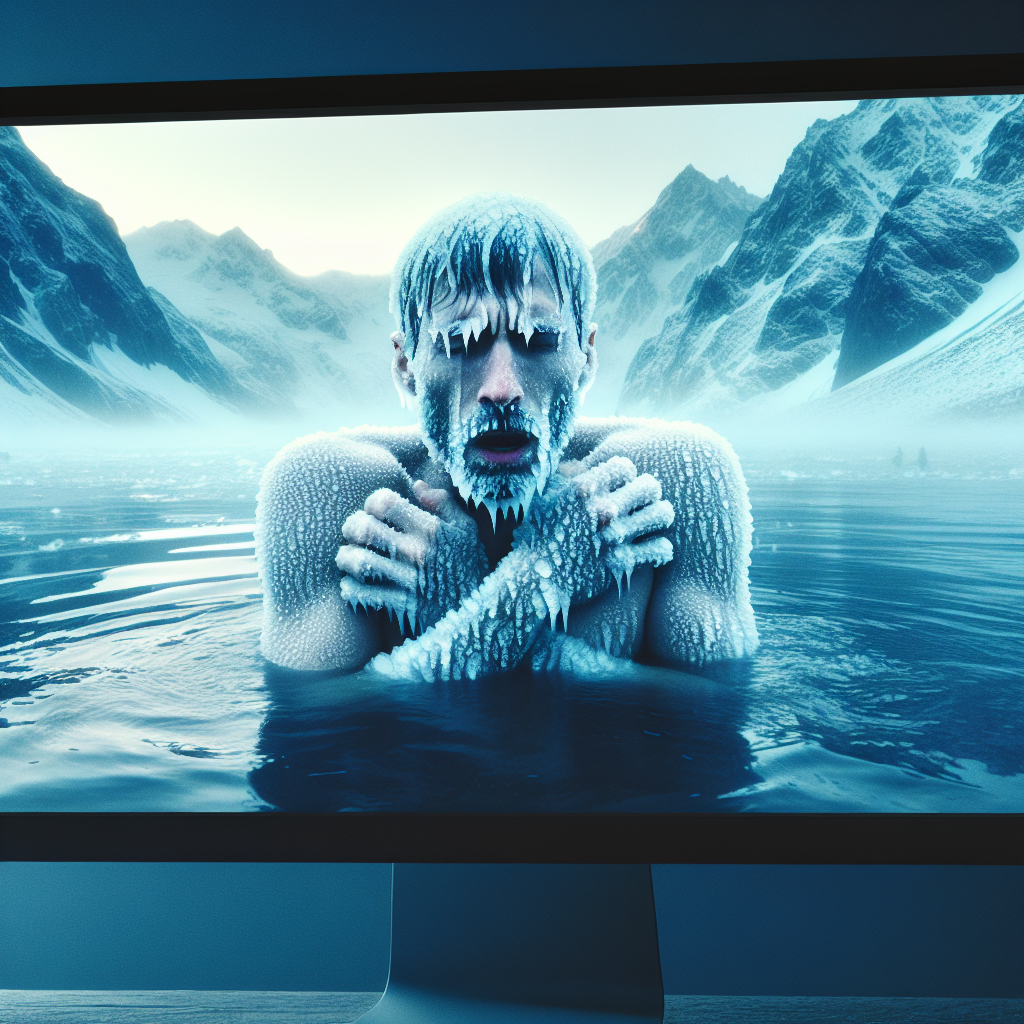Brace yourself, it’s time to debunk some myths! You might think you’re familiar with what happens when a person gets submerged in cold water, thinking hypothermia will set in instantaneously. However, this belief is just one of many misconceptions. The truth is, hypothermia isn’t as immediate as most people think. Through the “Hypothermia Myths Vs. Reality In Cold Water Immersion” article, unveil some surprising facts about how the human body responds to chilly water immersion. This article brings you face-to-face with the reality of hypothermia, dispelling long-held misunderstandings with well-researched, accurate information. Get ready to plunge into the cold, hard truths of hypothermia from the comfort of your warm, cozy spot.

Myth 1: The Myth of Immediate Hypothermia in Cold Water
Explanation of the myth
You’ve probably heard the popular myth circulating around that if you fall into cold water, you’ll experience immediate hypothermia. This claim suggests that within seconds or minutes of exposure, the body’s core temperature will drop to dangerous levels, triggering the onset of hypothermia.
Reality behind the myth
In reality, hypothermia is not an immediate occurrence upon cold-water immersion. It could take up to 30 minutes for an adult in good health to begin showing signs of hypothermia in freezing water. This time could be even longer in water that isn’t as chill. While it’s true that cold-water submersion is risky and uncomfortable, it doesn’t immediately lead to hypothermia.
Factors affecting the onset of hypothermia
Several factors determine the onset of hypothermia, including the water’s temperature, individual longevity in the water, clothing, body composition, and physical condition. An individual’s ability to control their breathing and avoid panic also plays a critical role in slowing down the body’s heat loss.
Myth 2: Alcohol Warms the Body in Cold Water
Explanation of the myth
The myth of alcohol as a body warmer, particularly in cold water, has been depicted in many survival movies and stories. The thinking is that a swig of whiskey or brandy could help keep you warmer and increase your survival chances if you’re stranded in cold water.
Reality behind the myth
Contrary to this belief, alcohol actually increases the risk of hypothermia rather than reducing it. Alcohol induces peripheral vasodilation, a condition in which your blood vessels expand, particularly those near your skin. This action increases heat exchange with the cold water and accelerates the lowering of body temperature.
Dangerous effects of alcohol on cold water immersion
In addition, alcohol impairs your cognitive functions and physical coordination, which are both critical to survival in hypothermic conditions. You’re likely to make poorer decisions and encounter challenges in moving your body as needed. Also, alcohol may give you a deceptive sense of warmth, leading to potentially hazardous complacency.
Myth 3: Swimming to Warmth is the Best Course of Action
Explanation of the myth
Another common myth is the belief that swimming vigorously in cold water will warm you up and help you avoid hypothermia. The idea is that the physical exertion will generate body heat and counteract the cooling effect of the water.
Reality behind the myth
Unfortunately, this is another myth that could put you in more danger. The physical exertion from swimming increases the blood flow to your limbs, redistributing the warmth in your body away from your core and speeding up the process of body cooling.
Consequences of swimming in cold water
Swimming when in cold water can also lead to more rapid exhaustion and the increased inhalation of water. This situation can worsen your survival chances.
Effective strategies for survival
Instead of swimming, adopting heat-conservation techniques such as curling your body up into a fetal position could be more effective. If you must move, do so slowly and carefully, prioritizing maintaining body heat over fast swimming.

Myth 4: Hypothermia Only Affects the Elderly and Unfit
Explanation of the myth
Many people believe hypothermia exclusively affects the elderly or those in poor physical condition, ostensibly because their bodies are less capable of generating and retaining heat.
Reality behind the myth
The truth is that hypothermia could affect anyone, regardless of age or physical condition. Everyone has a limit to how well their body can cope with cold-water exposure. Even the most well-trained athletes can succumb to it under severe conditions.
Vulnerability to hypothermia in all age groups
While the elderly and those with underlying medical conditions may be more vulnerable, younger and healthier individuals are equally at risk if the conditions are severe enough. Hypothermia sets in when the body can’t generate heat as quickly as it’s being lost, which can occur in anyone immersed in cold water.
Myth 5: Hypothermia is Easy to Detect
Explanation of the myth
The assumption that hypothermia is easy to detect hinges on the belief that the symptoms are clear, obvious, and unmistakable. Feelings of intense cold and shivers, as well as physical discomfort, are perceived as sure signs of hypothermia.
Reality behind the myth
Identifying hypothermia isn’t always straightforward. The symptoms of hypothermia begin as mild and subtle before progressing to more severe levels. Often these mild symptoms are overlooked until the hypothermia has escalated to a dangerous level.
Signs and symptoms of hypothermia
Early symptoms include intense shivering, cold and pale skin, and an increased heart rate as your body tries to produce more heat. As hypothermia progresses, shivering might cease, and confusion, drowsiness, or unconsciousness could set in, along with slow, shallow breathing.
Challenges in recognizing hypothermia
Symptoms like confusion and drowsiness can be particularly hard to detect within oneself. A hypothermic individual might not be aware of their deteriorating condition and ability to make sound survival decisions. It’s critical to be aware of these symptoms to initiate immediate warm-up efforts and potentially contact emergency services.
Myth 6: Cold Water Conducts Heat Rapidly
Explanation of the myth
There’s a common belief that cold water conducts heat away from the body more quickly than air of a similar temperature. This idea gives the impression that being submerged in cold water makes your body lose heat at an alarmingly fast rate.
Reality behind the myth
It is true. Water conducts heat faster than air. But while cold water does conduct heat away from your body, it doesn’t happen as quickly as the myth presumes.
Heat transfer mechanisms in cold water
The conductive heat loss in the water is a gradual process. Your body loses heat through both convection and conduction mechanisms, slowly lowering your body’s core temperature over time. However, the rate of this heat loss varies, based on individual factors and the water’s exact temperature.
Myth 7: Once Hypothermia Sets In, It Cannot Be Reversed
Explanation of the myth
Some people believe that once you start showcasing symptoms of hypothermia, it cannot be reversed – that there’s no going back, and it will only get worse.
Reality behind the myth
In actual fact, hypothermia can be treated effectively if detected early. Although severe cases may require immediate medical attention, mild to moderate hypothermia can often be reversed with simple rewarming strategies.
Steps for treating hypothermia
The first step in treating hypothermia is reducing further heat loss. This strategy might mean getting out of cold water, removing wet clothes, and stepping into a warm environment. Then, apply gentle warming measures like body-to-body contact, heated blankets, or drinking warm, non-alcoholic beverages. In any case, anyone suspected of being hypothermic should be evaluated by a healthcare professional as soon as possible.
Myth 8: Wet Clothing Increases the Risk of Hypothermia
Explanation of the myth
The assumption here is that wet clothes can significantly and rapidly increase the risk of hypothermia because water conducts heat faster than air.
Reality behind the myth
While it is true that wet clothes can contribute to body heat loss, the idea that they significantly increase the risk of hypothermia is largely exaggerated.
Impact of wet clothing on body temperature
Wet clothes do conduct heat away from the body, but once the clothes are wet, they transfer heat at a similar rate as the surrounding water. So in other words, wet clothes don’t accelerate heat loss but instead contribute to a sustained loss of body heat.
Precautions to take
If you’re immersed in cold water, wet clothes should be the least of your concerns. Your survival priority should be to try to stay afloat using any possible flotation device and limiting your movements to conserve body heat.
Myth 9: Hypothermia Only Occurs in Freezing Temperatures
Explanation of the myth
There is a perception that hypothermia only happens when the body is exposed to sub-zero or freezing temperatures. This belief presumes that cases of hypothermia can’t happen in mild or warm climates.
Reality behind the myth
Contrary to this belief, hypothermia can occur at temperatures well above freezing. Hypothermia is all about how quickly your body loses heat compared to how fast it can produce it. Even at relatively mild temperatures, if your body is wet and exposed to wind, hypothermia can set in.
Risk of hypothermia in various temperatures
It’s worth knowing that the risk of hypothermia increases as the temperature decreases, however, even water temperatures that might seem safe and warm can be dangerous over extended periods.
Myth 10: Hypothermia Can Be Cured with Warm Liquids or Hot Baths
Explanation of the myth
A commonly held belief is that drinking warm liquids or taking a hot bath can cure hypothermia. This myth assumes that by warming the body rapidly from the inside or out can effectively reverse the onset of hypothermia.
Reality behind the myth
Unfortunately, this method oversimplifies the treatment necessary for hypothermia. Rapid rewarming, especially in moderate to severe cases of hypothermia, can cause serious complications.
Proper treatment methods for hypothermia
Rewarming should be done at a controlled and slow rate, ideally under medical supervision. Using sources of heat like hot baths can rewarm the extremities faster than the core, causing a sudden drop in core body temperature, potentially leading to a shock. It’s crucial to remember that only medical professionals should oversee the rewarming process of severely hypothermic individuals.
